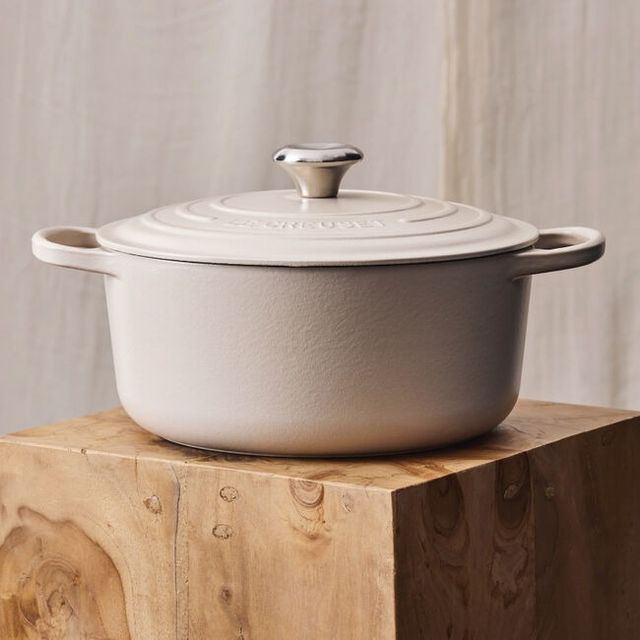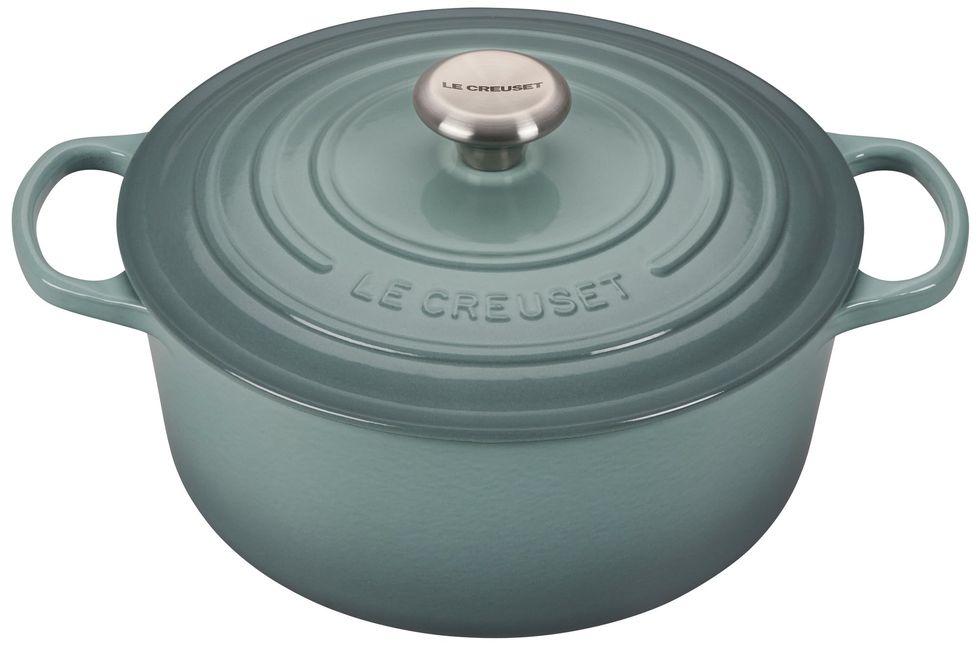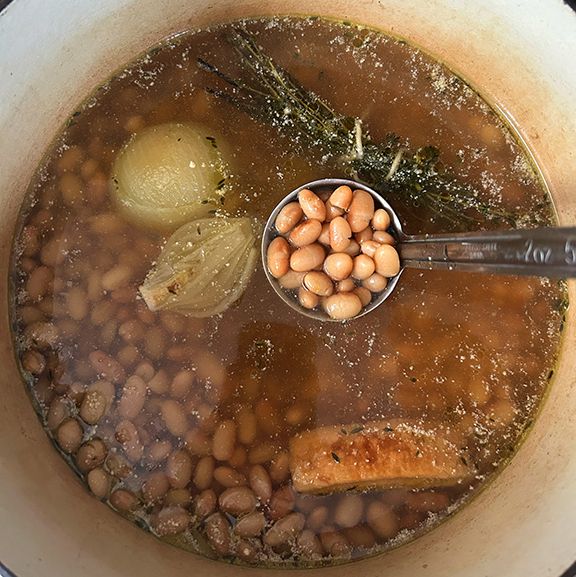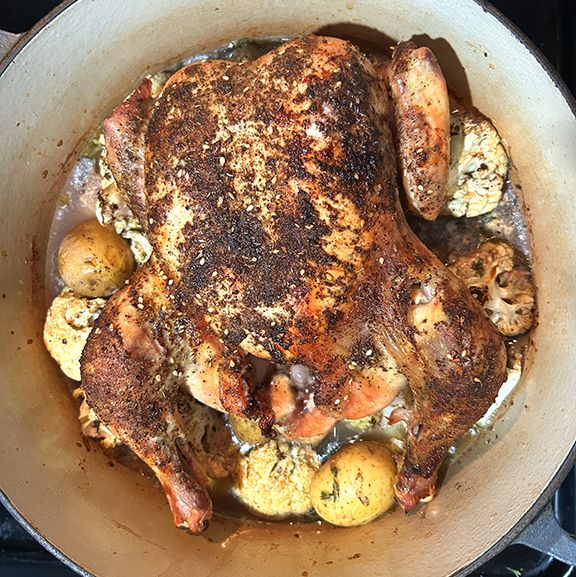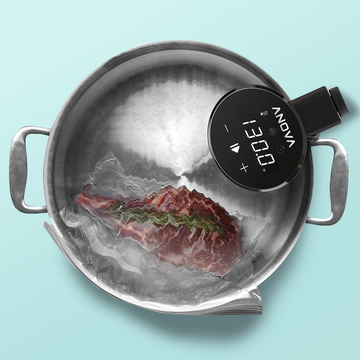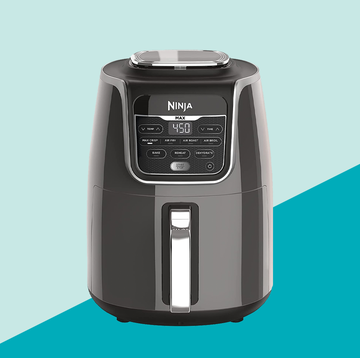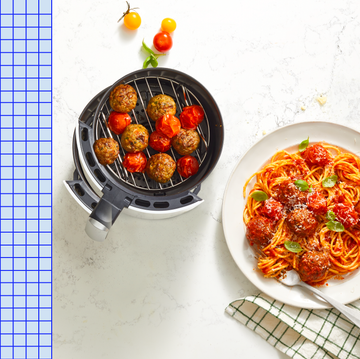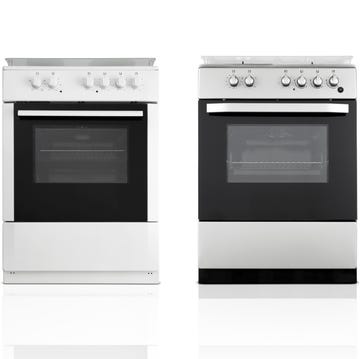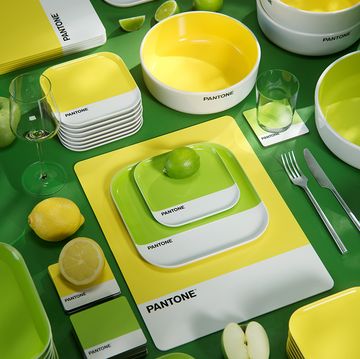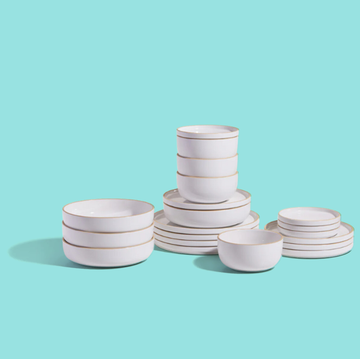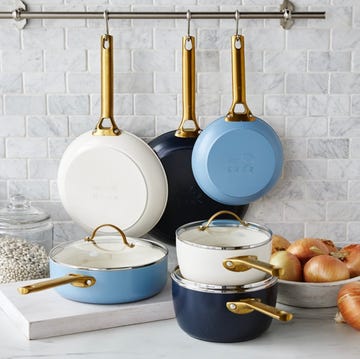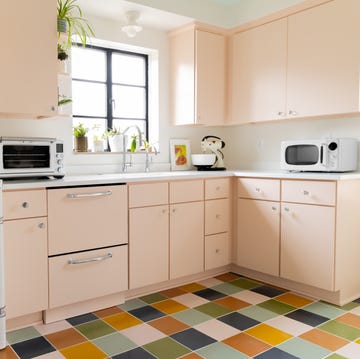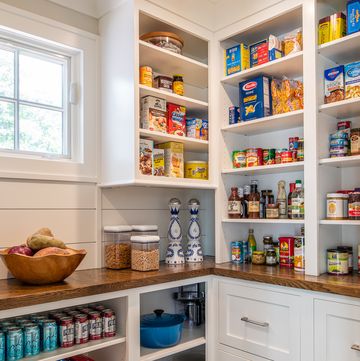All of the professional cooks in the Good Housekeeping Institute Kitchen Appliances Lab and Test Kitchen love an enameled cast iron Dutch oven. That's because it's a deep pot with a lid that lets you simmer, boil, fry, braise and bake — and the one Dutch oven brand we turn to again and again is Le Creuset.
Of course, Le Creuset's Dutch ovens don't come cheap. So what's the deal? Is the Le Creuset Dutch oven worth it? We have lots of opinions after decades of daily use and Lab testing.
What is a Le Creuset Dutch oven?
There are several types of Dutch ovens sold by the Le Creuset company, a French cookware producer known for its enameled cast iron pots and other pans, skillets and bakeware, as well as mugs and kettles, crocks and bowls, tabletop items and more.
The brand's Dutch ovens come in a variety of shapes and sizes, from classics like round and oval to fun seasonal offerings, like the popular heart and cute apple shapes.
The company has been making cookware since 1925. It produces high-quality cast iron pieces, meaning they retain heat well, and they're coated with enamel, which makes cleanup very easy and enhances the variety of rich colors Le Creuset offers.
Enameled cast iron is compatible with any cooktop, including induction, and Le Creuset's Dutch ovens are oven-safe to at least 390°F/190°C (some pots have lid knobs that are safe to or beyond 500°F/250°C).
What we love about Le Creuset Dutch ovens
There are several factors that stand out when it comes to Le Creuset's products. Here are a few of our favorites.
✔️ Even heat distribution
Le Creuset earned a high score in our Lab's heat distribution tests. That means the cookware absorbs and distributes heat well, which equates to even cooking throughout the pot with minimal hot spots. This top level of performance is one of the reasons this pot earned a GH Kitchen Gear Award.
✔️ Great heat retention
Cast iron heats well and then retains that heat, so you get consistent heat over the course of your cook, and foods will stay hot and then cool gently when you remove the pot from the heat. Recipe Editor Susan Choung, who has been using her Le Creuset Dutch oven since 2013, appreciates this ability, saying, "It’s especially great for cooking Korean stews, which tradition dictates must be served scalding hot at the table."
✔️ Smart design with a tight-fitting lid
Kitchen Appliances and Innovation Lab Director Nicole Papantoniou notes that the cookware's shape plays a role in its ability to deliver consistent results. "The Le Creuset Dutch oven has a rounded bottom, which makes it easy to scrape down the interior of the pot," she says. "And the straight sides, coupled with the tight-fitting lid, help the pot retain heat and moisture, which is perfect for braising. The meat in the stew we made in our Lab test was so moist and tender."
✔️ Easy to clean
The enamel coating provides a slick surface that cleans up well while resisting staining. Food Producer Tina Martinez, who's been using her Le Creuset Dutch oven for 20 years, says, "Even if I scorch the bottom, by some miracle it's so easy to clean and never is ruined. It's magic!" The company says that the Dutch oven can be cleaned in the dishwasher, but we don't recommend it: It's simple to wash by hand and can extend the life of your coating.
Looking for a step-by-step? Check out our Cleaning Lab's tips on how to clean an enamel cast iron Dutch oven. Our experts do note that it's best to clean any splatters on the outside of the pot quickly, because they can lead to staining or discoloration over time.
✔️ Light-colored interior
Traditional cast iron is black, inside and out. But Le Creuset's enamel coating makes the interior of the pot a light color, similar to ivory. This is a great feature because it allows you to see how foods are browning. You can then also make sure you are scraping up all the flavorful browned bits when deglazing your pot after searing.
✔️ Extremely durable
Cast iron is known for taking a beating while lasting for generations. Several staffers have had their pots for 20 years or more and still use them with out-of-the-box success. Our in-house nutritionist, Stefani Sassos, says: "I’ve had mine for over five years, and it still looks and performs as good as new. No scratching, chipping or damage — despite heavy repeated use."
✔️ Generous handles
The handles provide the right scale to be comfortable, and they keep the pot balanced. Says Product Analyst Eva Bleyer: "They're easy to grasp, which is so important for such a heavy piece of cookware." The lid, too, has a handle we appreciate. Papantoniou says: "The lid knob is wide and comfy to hold."
✔️ Gorgeous colors
This cookware comes in 20 colors; most have a shiny finish but the brand now offers a matte finish as well. Bleyer likes that the Dutch oven can even double as decor: "I love that when I’m not using it, it’s a beautiful pop of color on my stovetop. I’m building a collection of different colors." Sassos agrees: "I always keep this pot out, and there is no other pot or pan that I do that with."
Some things to note
✔️ Heavy
The high durability of cast iron comes with some serious heft. Most Dutch ovens are heavy, but it's still worth noting. Le Creuset's 5.5-qt model is listed at 11.31 pounds. One consumer tester reported, "You need to use two hands to lift it. I would not want to be cooking with this every day because of its weight." That said, while Le Creuset tends to be heavier than Lodge (which offers a 6-qt version at the same 11.31 pounds), it is often lighter than Staub (where the 5.5-qt pot clocks in a 14.52 pounds).
✔️ Expensive
Le Creuset tends to be pricier than its competitors. There are Black Friday/Cyber Monday sales for those looking to score a deal. And the brand hosts Factory to Table sales that you can find on the Le Creuset site; they require a ticket but offer discounts and sometimes access to exclusive colors or products. But even if you pay full price, our pros feel that the value is high: You get a pot that performs well and won't need to be replaced, so the purchase is a sound long-term investment.
How we test Dutch ovens
The experts in the Good Housekeeping Institute Kitchen Appliances and Innovation Lab have tested more than 25 Dutch ovens over the years. We rate how each pot heats, cooks and cleans. We prepare a beef stew to evaluate the Dutch oven's ability to brown meat and simmer steadily and evenly. During cooking, we note whether the handles are comfortable and whether they stay cool. After cooking, we wash the pot to see whether it cleans easily without staining or chipping.
We weigh each Dutch oven and check whether the lid fits tightly. We also perform a test designed to show the pot's heat distribution and responsiveness: We coat the bottom with shortening and a thin layer of flour and then heat the pot until the flour browns. The level of browning is then evaluated against a standardized chart. We check the pattern of the browning to note hot spots in the pan; a uniform pattern indicates that the pot evenly distributes heat.
In addition, we have sent some Dutch ovens to consumer testers for feedback, and we use them at home in our daily lives — some of our analysts and recipe developers have been using Le Creuset Dutch ovens for more than 20 years.
How does Le Creuset compare to other brands?
One differentiator that comes up often is the price: Le Creuset Dutch ovens tend to be more expensive than other brands. Two top competitors are French company Staub and American maker Lodge; both make quality cookware and are recommended among our top Dutch ovens.
Staub did not do as well in our heat distribution test as Le Creuset did. The brand is known for its lid with bumps (“picots") that collect steam and redirect the moisture back onto the food — sometimes called a "self-basting lid." Assistant Food Editor, Samantha MacAvoy, is a fan. She says, "I reach for my Staub 5-qt Dutch oven all the time, whether I’m making a weeknight pasta or going for a two-hour braise in the oven."
Lodge's enamel cast iron Dutch oven is wider and has flared sides. (We recently tested the 6-qt model, as the company does not make a 5.5-qt.) Its lid is more domed than Le Creuset's, and Papantoniou noted that condensation spilled onto the stovetop, meaning that the lid did not fit as tightly or redirect steam as efficiently. The meat was tender but less moist than Le Crueset's. That said, it's a gorgeous piece for the price, it offers a similar light-colored interior for monitoring browning and it does retain heat well.
Is the Le Creuset Dutch oven worth it?
Yes. It's worth the high price tag because it delivers consistently great results and will last for decades. It is heavy, but that is simply true of Dutch ovens, and it will resist staining and chipping while being easy to clean. It's also available in a ton of colors, which makes the cookware feel more personal and can match the aesthetic of your kitchen.
Why trust Good Housekeeping?
Sarah Gregory Wharton has tested Dutch ovens for the Good Housekeeping Institute, and she has been using Le Creuset Dutch ovens for more than 20 years, including as a recipe developer. She has also tested a hybrid cookware set and carbon steel pans for Good Housekeeping.
Kitchen Appliances and Innovation Lab Director Nicole Papatoniou performed additional testing for this story. She has tested countless types of cookware including ceramic cookware sets and nonstick cookware sets. She is a graduate of the French Culinary Institute (now the Institute of Culinary Education).

Sarah (she/her) is a deputy editor in the Good Housekeeping Institute, where she tests products and covers the best picks across kitchen, tech, health and food. She has been cooking professionally since 2017 and has tested kitchen appliances and gear for Family Circle as well as developed recipes and food content for Simply Recipes, Martha Stewart Omnimedia, Oxo and Food52. She holds a certificate in professional culinary arts from the International Culinary Center (now the Institute of Culinary Education).
